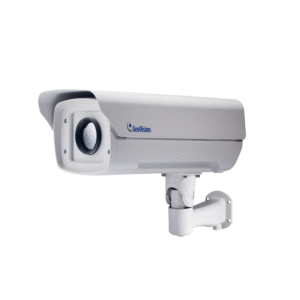
Perimeter detection is usually the first line of defense for end user organizations, especially critical facilities such as airports, refineries and military bases. Detection of intruders and responding to them, therefore, has become vital for operators. Today, video surveillance has become more and more advanced and is used for both intrusion detection and verification purposes.
A major advantage of video is it actually sees what’s being detected. Advanced surveillance technologies provide fewer false alarms than conventional detection sensors, which can be triggered by a variety of factors including weather and wildlife.
Sight is the primary sense for humans, as such, this is the sense we go to in critical situations and the sense we tend to believe over all our other senses. So even if another sensor provides a warning, humans will want some form of visual verification to confirm what they are being told is true.
Cameras used
The most important component in a video-based perimeter detection system is the camera, which can be thermal or visible depending on the user application. Video analytics works equally well on thermal and visible camera types. However, for the user, detection at night and in harsh weather conditions may be more important than collecting identification details, such as clothing color, facial features or type of vehicle. In this case they would choose thermal over visible. In other applications, where the ability to understand specific details about the target is important, visible cameras may be more appropriate.

In most instances, thermal and visible cameras are used in conjunction with one another. As an example, detection of an object by a thermal camera can trigger a PTZ camera to zoom in on that object. The combination of thermal for detection and PTZ dome camera to pinpoint and collect visible information brings a big advantage for the first layer.
In terms of detection, thermal cameras will typically provide the best overall results for perimeter protection applications. However, each facility needs to be evaluated individually to take specific environmental and topography influencers into consideration. In many instances, visible cameras supplement thermal imaging devices for identification, manual tracking and situational awareness.
Smarter than ever
The video feed taken by the cameras is then analyzed by video analytics, which generates an alarm when certain predefined conditions are met. Today’s analytics has become more intelligent than ever and is capable of more than issuing an alarm when an object enters a specific region. It can restrict alarms by the object that is detected, be it a human, an animal or a car, or by the action taken by the object, for example loitering, tailgating or dropping an object.
Other developments include … the capability to perform video analytics on all types of moving platforms; vehicles, UAVs, boats, and the continued trend to combine intelligent video with other sensors for a more robust solution, such as, radar, GPS, fence, gunshot detection, access control and IOT devices. The availability of open source neural network software has had an impact on the video analytics market. Deep learning has definite applications for some types of video detection, and it has been proven to decrease nuisance conditions for these types of installations.
The VCA can reside on cameras, servers or even edge boxes, depending on application.
The difference for the user typically comes down to the desired complexity level of the detection algorithm, or the desire to analyze higher resolution video. Due to limited space in a camera housing, camera-based VCA algorithms tend to be restricted by processor speed, data throughput and available memory. Servers will always be the most affordable solution if you desire the highest performing video algorithm. Edge boxes are a great alternative between camera-based and server-based solutions. They are small, environmentally rugged devices, that are installed in the vicinity of the cameras, but are typically dedicated to video analytics. This dedicated computing power allows them more capability in terms of algorithm performance and data throughput.
Source: a&s Magazine



































































